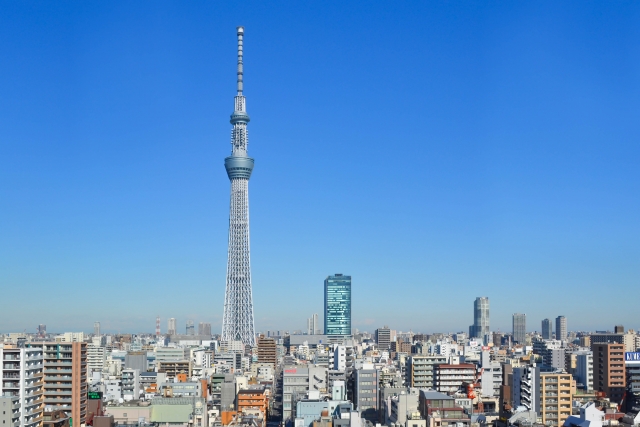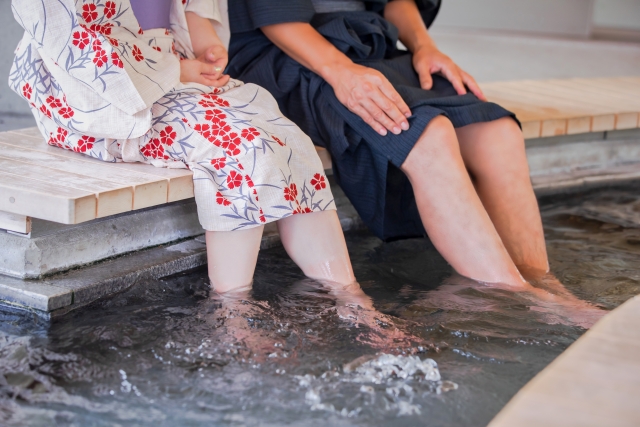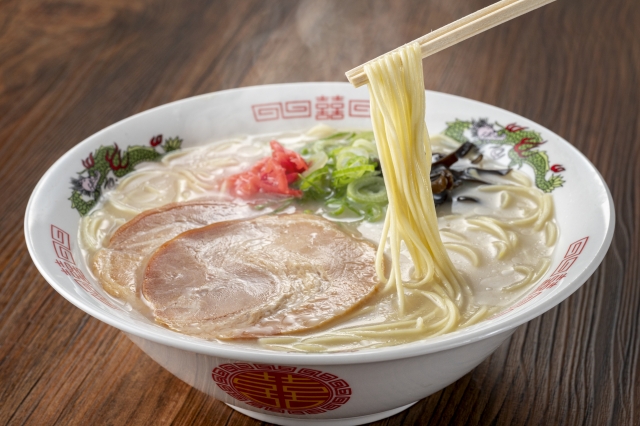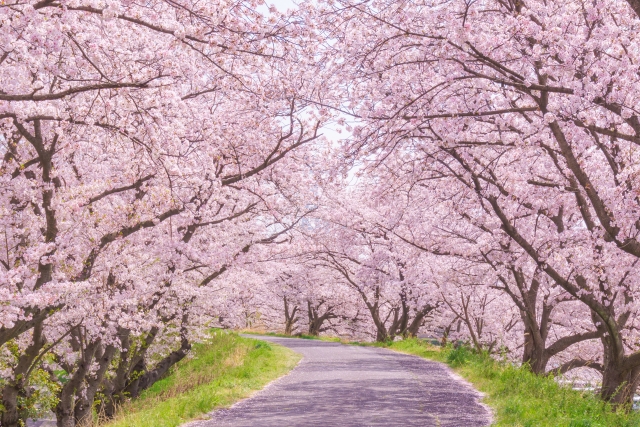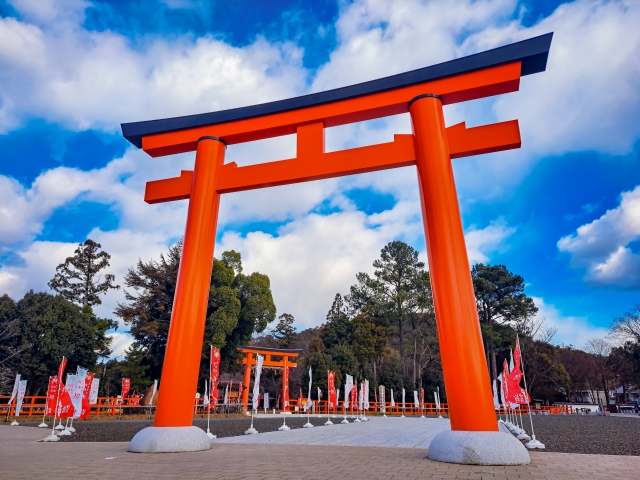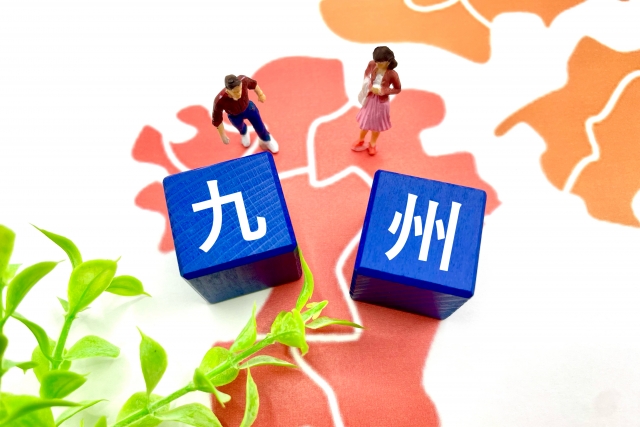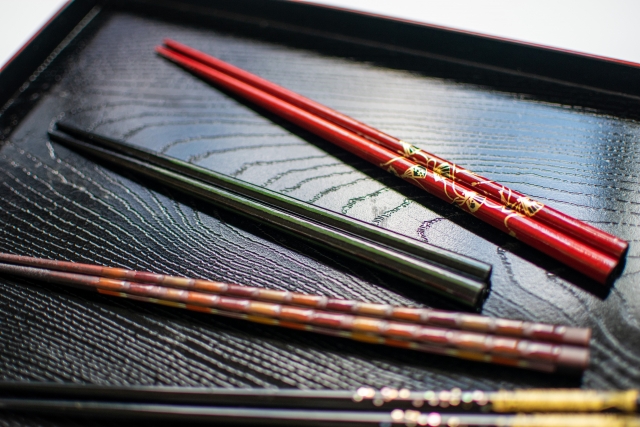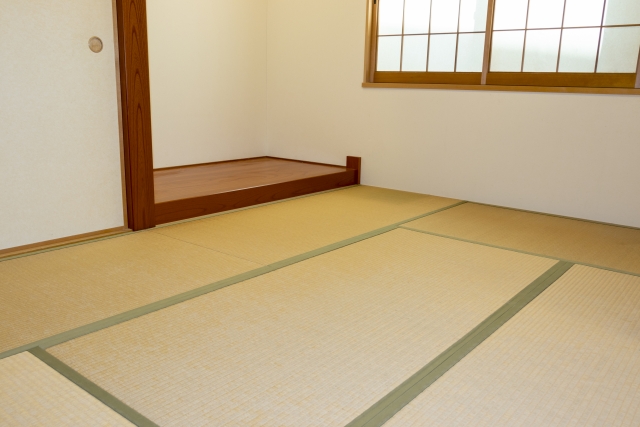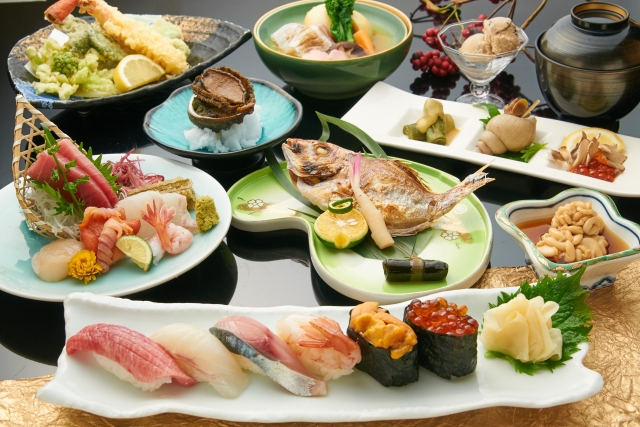“Hinamatsuri”(Doll’s Festival) is an annual event in Japan to pray for the healthy growth of girls.
It is also called “Momo no Sekku” (Peach Festival), and is one of the most celebrated festivals in Japan, featuring hina dolls (mainly male and female dolls), decorations of cherry blossoms, tachibana, peach blossoms and other trees, hina-arare (rice cake cubes), hishi-mochi (Diamond-shaped rice cakes), white sake, chirashi-zushi and clam dishes. Hina dolls are decorated in many parts of Japan, and it has also become a family event where they are displayed inside the house.
Hinamatsuri is said to be a festival to pray for the healthy growth of girls, and the “hina dolls” are meant to transfer the girl’s impurities and take the place of bad luck. Nowadays, it is considered to be an event for girls, but actually, looking back at its history, it was not originally an event for girls. So when did it come to be considered an event for girls?
 The origin of Hinamatsuri comes from “Jyoushi”, one of the “Five Seasonal Festivals”, which was introduced from China in the Nara period (710-794).
The Five Seasonal Festivals
January 7th – JInjitsu (Nanakusa-gayu)
March 3: Joushi (Peach Festival)
May 5: Tango (Iris Festival)
July 7 Tanabata (Star Festival)
September 9th – Chouyou (Chrysanthemum Festival)
In China, there was a custom to purify oneself in a river to ward off evil spirits during the “Jyoshi,” one of the five seasonal festivals. It is said that this event spread to Japan, where paper dolls are floated down the river to purify oneself from evil spirits. This custom of warding off evil spirits by floating dolls down the river is the origin of Nagashi-bina, an event of the dools’ Festival that still remains even today.
The origin of Hinamatsuri comes from “Jyoushi”, one of the “Five Seasonal Festivals”, which was introduced from China in the Nara period (710-794).
The Five Seasonal Festivals
January 7th – JInjitsu (Nanakusa-gayu)
March 3: Joushi (Peach Festival)
May 5: Tango (Iris Festival)
July 7 Tanabata (Star Festival)
September 9th – Chouyou (Chrysanthemum Festival)
In China, there was a custom to purify oneself in a river to ward off evil spirits during the “Jyoshi,” one of the five seasonal festivals. It is said that this event spread to Japan, where paper dolls are floated down the river to purify oneself from evil spirits. This custom of warding off evil spirits by floating dolls down the river is the origin of Nagashi-bina, an event of the dools’ Festival that still remains even today.
 In the Edo period (1603-1868), as the technology of doll making developed and splendid dolls were made, dolls were changed from something to be floated down the river to something to be displayed. From that time on, it became an event for girls. Hinamatsuri, which used to be held only among the court and samurai warrior class, started to be held among the common people around 1700.
It was in the Showa period (1926-1989) that the current form became popular in Kansai as a symbol of the times, with the popularity of Goten decorationts and gorgeous 7 tiered decorations with a full set of 15 dolls. As time went on, more and more compact dolls became popular due to changes in home environment and housing conditions.
In the Edo period (1603-1868), as the technology of doll making developed and splendid dolls were made, dolls were changed from something to be floated down the river to something to be displayed. From that time on, it became an event for girls. Hinamatsuri, which used to be held only among the court and samurai warrior class, started to be held among the common people around 1700.
It was in the Showa period (1926-1989) that the current form became popular in Kansai as a symbol of the times, with the popularity of Goten decorationts and gorgeous 7 tiered decorations with a full set of 15 dolls. As time went on, more and more compact dolls became popular due to changes in home environment and housing conditions.
 Hinamatsuri is celebrated on March 3rd. I think it is common for families to leave them for a few days because of the difficulty of setting them up as well as cleaning them up, but how long should you leave them?
As the custom of Nagashi-bina (flowing dolls) indicates, the purpose of decorating Hina-dools on Hinamatsuri is to transfer the girl’s impurities to the dolls and have them take care of the bad luck instead of her. Therefore, although there is no definite time of year, it is recommended to start decorating around the third week after Risshun, the change of seasons in February.
Is it better to put things away early?
There is no set rule, but since the dolls have taken the place of bad luck, it is often said that it is better to put them away early.
It is also said that the wedding scene of the hina dolls is a symbol of marriage, and that by putting them away early, you can marry early.
Hinamatsuri is celebrated on March 3rd. I think it is common for families to leave them for a few days because of the difficulty of setting them up as well as cleaning them up, but how long should you leave them?
As the custom of Nagashi-bina (flowing dolls) indicates, the purpose of decorating Hina-dools on Hinamatsuri is to transfer the girl’s impurities to the dolls and have them take care of the bad luck instead of her. Therefore, although there is no definite time of year, it is recommended to start decorating around the third week after Risshun, the change of seasons in February.
Is it better to put things away early?
There is no set rule, but since the dolls have taken the place of bad luck, it is often said that it is better to put them away early.
It is also said that the wedding scene of the hina dolls is a symbol of marriage, and that by putting them away early, you can marry early.
 This is the most common way to make a hina doll, and is the traditional way to make a Japanese doll. The body is made of wood or straw, and the arms and legs are attached to the body and dressed in gorgeous costumes. Finally, a head is attached to the doll.
This is the most common way to make a hina doll, and is the traditional way to make a Japanese doll. The body is made of wood or straw, and the arms and legs are attached to the body and dressed in gorgeous costumes. Finally, a head is attached to the doll.
 Kimekomi dolls are made relatively small in order to fit in display and storage space. The first step in making a Kimekomi doll is to mix paulownia wood powder called “touso” with glue called “shoufu-nori” and make it into clay. Thin grooves are then carved into the body of the doll. After that, cloth is placed on the surface and the edges of the cloth are pressed into the grooves to create the Kimekomi doll.
Kimekomi dolls are made relatively small in order to fit in display and storage space. The first step in making a Kimekomi doll is to mix paulownia wood powder called “touso” with glue called “shoufu-nori” and make it into clay. Thin grooves are then carved into the body of the doll. After that, cloth is placed on the surface and the edges of the cloth are pressed into the grooves to create the Kimekomi doll.
 This is the most gorgeous decoration. Fifteen dolls, including male and female dolls, three court ladies, five musicians, Zuijin, and Shichou, are all together. Many of the dolls are displayed on the traditional red carpet, which you may have seen in pictures.This is the type of decoration that is associated with the Dool’s festival.
This is the most gorgeous decoration. Fifteen dolls, including male and female dolls, three court ladies, five musicians, Zuijin, and Shichou, are all together. Many of the dolls are displayed on the traditional red carpet, which you may have seen in pictures.This is the type of decoration that is associated with the Dool’s festival.
 This type of decoration consists of male and female hina dolls, three court ladies, and the upper, first, and lower tiers of the seven tiered decorations. It comes with the three court ladies popular among children. More and more people are choosing this size because it is easy to assemble at home, doesn’t get in the way when placed in the living room, and doesn’t take up much space in storage.
This type of decoration consists of male and female hina dolls, three court ladies, and the upper, first, and lower tiers of the seven tiered decorations. It comes with the three court ladies popular among children. More and more people are choosing this size because it is easy to assemble at home, doesn’t get in the way when placed in the living room, and doesn’t take up much space in storage.
 This is a hina decoration with only male and female dolls. There are many ways to enjoy them, from large ones to small ones.
This is a hina decoration with only male and female dolls. There are many ways to enjoy them, from large ones to small ones.
 There are various forms of hina dolls in different parts of the Japan, including seven-tiered dolls and the vine style “tsurushibina”.
In this article, I’ll introduce the types of 7 tiered hina dolls.
Top tier: Otono-sama (lord) and Ohime-sama (princess)
Represents the Emperor and Empress.
There are various forms of hina dolls in different parts of the Japan, including seven-tiered dolls and the vine style “tsurushibina”.
In this article, I’ll introduce the types of 7 tiered hina dolls.
Top tier: Otono-sama (lord) and Ohime-sama (princess)
Represents the Emperor and Empress.
 During “Sekku”, the change of seasons, there was a custom of eating seasonal plants and other foods to get vitality for the purpose of getting rid of evil spirits, and rice cakes made from Jersey Cudweed(the seven herbs of spring) were eaten.
During “Sekku”, the change of seasons, there was a custom of eating seasonal plants and other foods to get vitality for the purpose of getting rid of evil spirits, and rice cakes made from Jersey Cudweed(the seven herbs of spring) were eaten.
 Hamaguri (clams) represent a married couple, as only a pair of shells can fit together perfectly, and the wish is to stay together with one person for life.
Hamaguri (clams) represent a married couple, as only a pair of shells can fit together perfectly, and the wish is to stay together with one person for life.
 The four colors of the typical the dolls’ festival sweets represent the four seasons.
Spring=green
Summer = pink
Autumn = yellow
Winter=white
The four colors of the typical the dolls’ festival sweets represent the four seasons.
Spring=green
Summer = pink
Autumn = yellow
Winter=white
 The ingredients in Chirashi-zushi are good luck charms, and the gorgeous colors matches celebrations, which is why it was first made, and has now become a standard menu for the Doll’s Festival.
The ingredients in Chirashi-zushi are good luck charms, and the gorgeous colors matches celebrations, which is why it was first made, and has now become a standard menu for the Doll’s Festival.
 Shirozake is a sake made by mixing mirin with steamed rice and mold and letting it mature for about a month.
In the Edo period (1603-1868), Shirozake was an essential part of the Doll’s Festival, but originally it was customary to drink Toka-shu, which was made by soaking peach flowers in sake.
Shirozake is a sake made by mixing mirin with steamed rice and mold and letting it mature for about a month.
In the Edo period (1603-1868), Shirozake was an essential part of the Doll’s Festival, but originally it was customary to drink Toka-shu, which was made by soaking peach flowers in sake.
Contents
What is the history and origin of Hinamatsuri?
When is the Doll Festival?
Types of making Hina dolls
Each hina doll is different in terms of the materials used for the doll and the way it is made, but here are two typical ways to make them.“Isyogi-dool” (costume-wearing doll)
Kimekomi-doll(wooden dool dressed in kimono)
Types of ways to decorate hina dolls
The way to decorate hina dolls has been changing little by little according to the housing environment and the times. Here are some of the different ways to display them.Seven-tiered decoration
Three-tiered decoration
Shinnoh-decoration
Storage-decoration
This is a hina doll with a storage box that can be used as a display stand to store dolls and tools. There are two basic types: male and female dolls only, and five-person decorations complete with three court ladies. It’s nice to be able to choose according to the atmosphere of your room and your taste.Case-decoration
This is a type of hina dolls in which the dolls and tools are fixed in a glass or acrylic case in advance. The reason for their popularity is that they are dust-free, do not require cleaning, and are easy to put in and out. The only problem with this type of doll is that you don’t get to take it in and out, so you don’t feel the Doll’s festival feeling.Types of Hina Dolls
San-nin Kanjo (three court ladies).
From right to left, they hold a long-handled ladle, a sampo(wooden stand), and a choshi (sake vessel).Gohinbayashi: (five boys who play Noh music)
From right to left, they hold a chanting, flute, small drum, large drum, and drum.Zuishin (guardian)
The guardian of the two dolls, Odairi-sama and Ohina-sama. There are two ministers, the Minister of the left and the Minister right).Shicho: (the three servants)
From right to left, they have a broom, dustpan, and rake. (They may also have a standing umbrella, a shoe stand, and a platform umbrella as attendants for going out. As the number of tiers increases, other characters may be placed.Hinamatsuri dishes
Food for the Dolls’ FestivalHishimochi (diamond-shaped rice cakes) decorated for Hinamatsusri.
Hina Matsuri Menu
Hama-guri soupHina Arare(rice cake cubes)
Chirashi-zushi
A masterpiece of the sea, the skill of a craftsman. Sushi is the ultimate charm of each piece.



